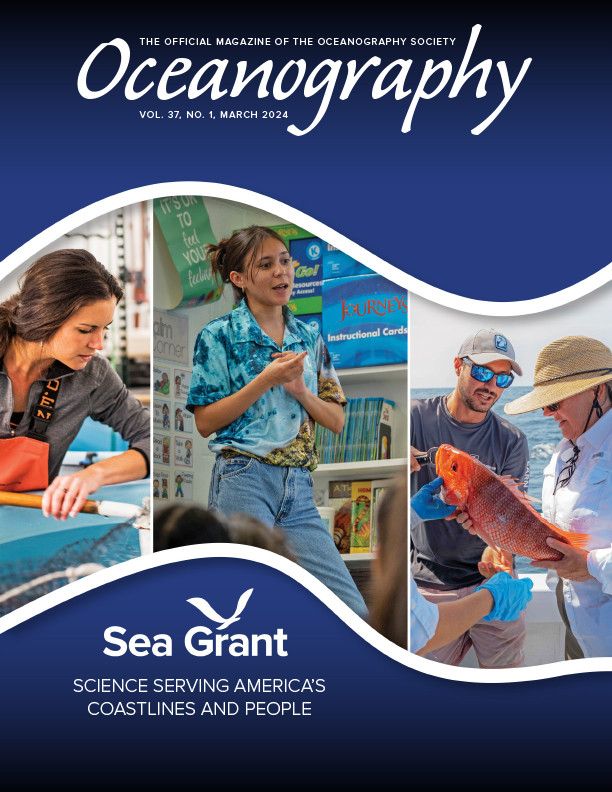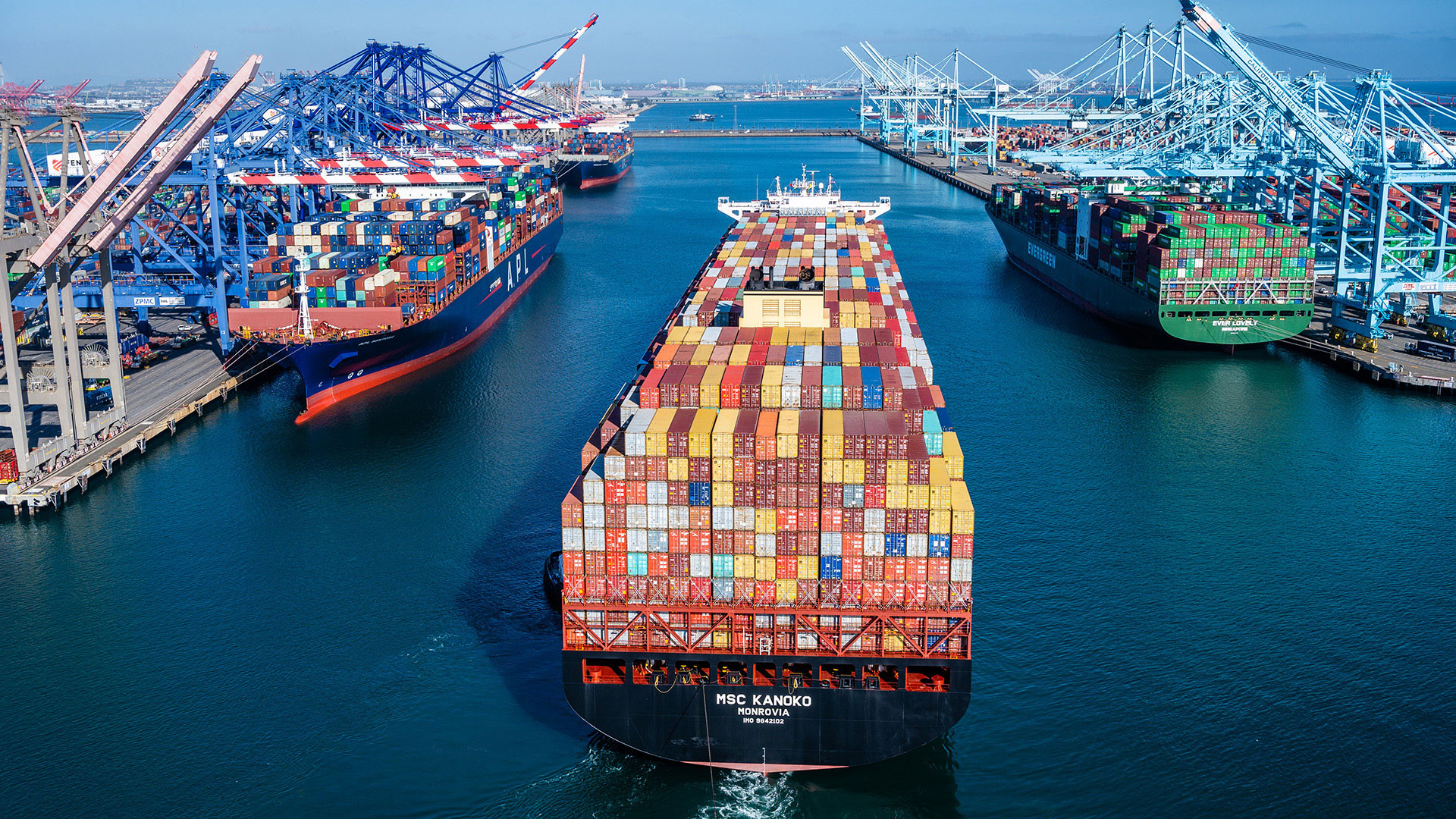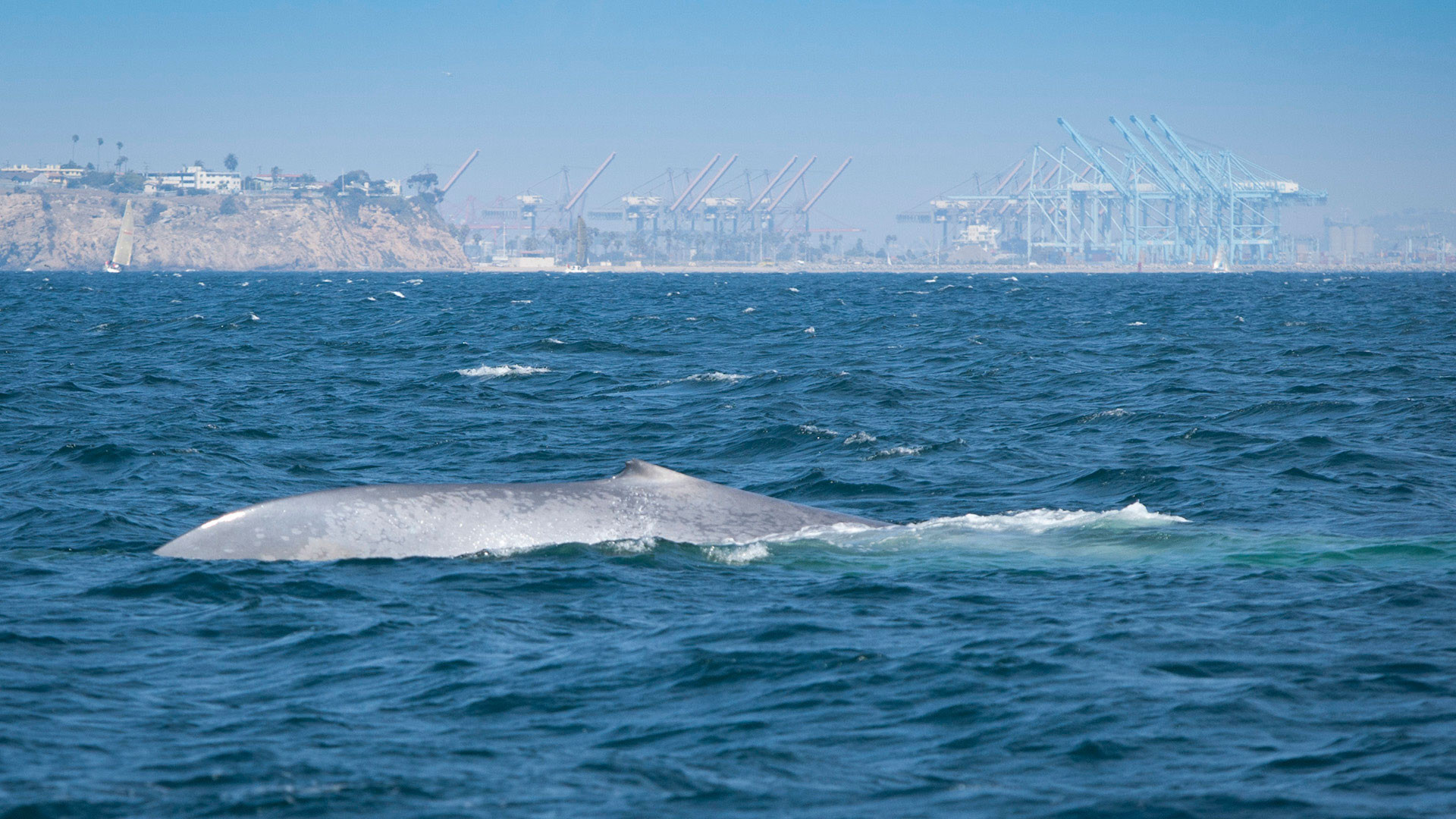Full Text
Three-quarters of US trade and 90% of international trade are still moved by ships, and the global demand for waterborne trade is expected to more than double by 2025 (USCG, 2018). The adjacent Ports of Los Angeles and Long Beach constitute the largest port complex in the United States, the ninth largest in the world, handling over $500 billion US dollars in cargo and nearly 19 million shipping containers annually (POLA, 2023; POLB, 2023). What may seem like chaos at first glance is actually a highly choreographed dance. A network of one million regional jobs and close to four million national jobs support this interconnected system of football-field-sized container ships, oil tankers, carriers with thousands of imported cars, over one hundred sky-scraping cranes, thousands of trucks, and hundreds of miles of train rails. (POLA and POLB, 2020; POLA, 2023; POLB, 2023). In this dance, speed is time, and time is money. However, being bigger and faster comes at a cost—burning more diesel fuel, generating more greenhouse gas emissions, and threatening several species of endangered whales.
|
|
Instead of viewing the two local ports as a problem, the Sea Grant program at the University of Southern California (USC) sees the ports and the shipping industry as essential elements of the US economy. Over the last two decades, USC Sea Grant has worked with the ports, government agencies, and other diverse partners to show that it is possible for both the environment and the economy to win.
When the California South Coast Air Quality Management District completed a comprehensive study of air quality in Los Angeles in 2000, it mapped hot spots with a higher incidence of cancers and asthma linked to air pollutants such as diesel particulate matter or soot. One hot spot was around the two seaports, not surprising due to the almost universal use of diesel engines there—by ships, port equipment, and truck fleets.
By 2006, the ports jointly initiated the Clean Air Action Plan to reduce diesel pollution, including strategies such as ship speed reductions, use of shoreside electric power, engine upgrades, railroad regulation, and support for zero-emission vehicles (CAAP, 2021). However, the real challenge came with facilitating compliance with the new rules, as many of the ship owners and operators were foreign companies or governments. The Plan was prepared in four languages—English, Mandarin, Korean, and Spanish—and USC Sea Grant facilitated broad stakeholder outreach, speaking at several large shipping conferences in Asia to help increase compliance. According to the latest Air Quality Control Board analysis, the strategies are working, with an 86% reduction in average soot levels and an 84% reduction in cancer risk from air toxics over the last two decades (SQAQMD, 2021). Air quality is still a major environmental justice concern for the local, low-income communities of color, but the ports have recently declared the goal of zero emissions in the movement of goods by 2035 (SPBP, 2017).
Seeing an obvious need for a cleaner alternative to diesel, in 2014, USC Sea Grant co-hosted an international conference focused on methanol, a fuel that generates significantly lower emissions (USC Sea Grant, 2014). Since then, USC Sea Grant has facilitated fuel conversations between academia and industry. Recently, A.P. Moeller-Maersk A/S, the world’s largest container shipping line, announced that it was constructing new vessels capable of operating on methanol and retrofitting old diesel engines to burn methanol, leading the company toward a net-zero emission target for its entire fleet by 2040 (Maersk, 2023).
Greenhouse gas emissions will improve with cleaner fuel, but until this technology is readily available, the easiest way to reduce cargo ship emissions is speed reduction—and this has an added benefit: protecting whales. The danger of whale strikes is especially high in the Santa Barbara Channel, an area of lush kelp forests and unparalleled biodiversity between the Channel Islands and the California mainland. Santa Barbara Channel serves as a feeding ground for gray whales and endangered blue, humpback, and fin whales migrating between Alaska and Baja California. It is also used by other giants—container ships headed to and from the Ports of Los Angeles and Long Beach. Adding further to the navigational challenges for whales, offshore oil rigs pock the waters; commercial fishers search for squid, lobster, and sea urchins; and the US Department of Defense uses the channel as a missile testing downrange safety area.
|
|
Seeking ways in which whales and humans could share these waters, the Channel Island National Marine Sanctuary sponsored a Marine Shipping Working Group, chaired by USC Sea Grant, with members from academia, maritime industries, military, Coast Guard, NOAA, the National Park Service, state agencies, county leadership, and environmental groups. Sea Grant excels in this type of work: convening diverse parties over a contentious issue and ensuring the best available science is upheld. From 2014 to 2016, the working group analyzed technological and spatial strategies for reducing whale strikes. Their proposed solution included a seasonal voluntary ship speed reduction program with monetary incentives from the ports to compensate for lost time (CINMS Advisory Council Marine Shipping Working Group, 2016). The resulting Blue Whales Blue Skies Initiative reports that, to date, program participation has resulted in a 44% reduction in fatal whale strikes as well as a reduction of over 108,000 metric tonnes of greenhouse gas emissions (CMSF, 2022). California is now considering legislation to enact this voluntary speed reduction program for the entire coastline (CSL, 2024).
Despite these achievements, more work needs to be done and will fall on the shoulders of future generations. With that in mind, for the last decade, USC Sea Grant has worked with the Port of Los Angeles in repurposing a large unused dockside space into a new educational facility, AltaSea (https://altasea.org/our-future-is-blue/). Established as a nonprofit organization in 2014, AltaSea serves as a marine research facility for 30 regional universities and colleges that did not previously have waterside access for research, and it also provides space for hands-on, environmental education and career development in the new blue economy for underserved, urban youth through programs with the Los Angeles Unified School District and other nonprofit partners (AltaSea, 2021; NOAA, 2023).
Operating in an intensely urban and developed coastline, USC Sea Grant sees the Los Angeles region as a model for other metropolitan areas. USC Sea Grant believes that if science can serve people, the environment, and the economy simultaneously in the mega-urban interface of Los Angeles, then it can be done anywhere.



